‘Joplin did it.’ First med school students graduate 10 years after monster tornado
At 5:03 p.m. on Sunday, May 22, 2011, more than 400 graduates of Joplin High School threw their maroon-colored caps into the air. Cali Clark kept hers on. She still has it, somewhere.
Eight minutes later, outdoor sirens across Joplin began to wail.
Meteorologists had been tracking huge thunderstorms firing up in the area. Menacing rotation began heading toward Missouri Southern State University on Joplin’s northeast side — where the high school graduation had just ended.
Even with sirens sounding, there was little panic. Parents and kids calmly walked to their cars in the parking lot, which faced sunny skies to the east. They couldn’t see the storm marching in from the west until they started driving away.
Celebrations became nightmares when a monstrous EF5 tornado slammed the town, obliterating more than a third of the city, injuring more than 1,000 people and killing more than 160.

Now, 10 years later, Clark is preparing for another graduation ceremony in Joplin that she hopes will be unforgettable for much happier reasons.
On Sunday, just days before the 10th anniversary of the tornado, she will be one of the first 131 students to graduate from Kansas City University’s College of Osteopathic Medicine in Joplin, which opened in 2017.
The inaugural class includes a handful of Joplin natives who like Clark dreamed of becoming doctors but never imagined they could one day go to med school in their own hometown.
They were teenagers when the tornado savaged their town. Some of them jumped in to help with relief efforts. Their memories remain vivid and unlike some who prefer not to talk about that day, they will.
The school has also attracted students from around the world who have brought noticeable diversity to this town of more than 50,000 in southwest Missouri.
“I think it was one of the big sparks that our community needed,” said graduate Michael Weaver, a Joplin native who rode out the 2011 tornado in the darkened basement of his parents’ house.
The school and tornado are forever linked. Years of planning that began before the tornado later coalesced after Mercy Hospital Joplin donated the building, and land, it used as a temporary hospital while it built a new one — which invites references to a phoenix rising from the ashes.
“It’s going to be so amazing to see this first graduating class walk across that stage and know that Joplin did it,” said Blair Freed, 25, a member of the inaugural class who will graduate next year.
Weaver remembers the building as a hospital, which it looks nothing like now.
“Walking into the school the first time after it was built was kind of awe-inspiring,” he said. “You walk into the main lobby, which goes into the main auditorium in which we spend much of our time in the first two years, and it’s just this big, wide-open space, lots of windows. Lots of light streaming in.
“They did a great job making the campus feel very natural. Lots of wood everywhere. Lots of places we can go and, I want to say relax, but that word isn’t compatible with medical school.”
‘Everything ... just flattened’
Freed wasn’t in town when the tornado hit, but she and her family “watched it that night on CNN and it’s hard to describe how surreal it is to see the rubble of your hometown on national news.”
Seeing lacerated, bloodied, broken bodies — and victims — and the legions of volunteers, doctors, nurses and first responders who came to help cemented some of the students’ plans to go into medicine.
“It was one of the factors that really helped solidify that decision,” said Freed, who decided when she was 12 she wanted to be a doctor. “Hearing about the first responders and what they did, it was absolutely that feeling you get in your stomach when you’re like, ‘This is what I want to do.’”
Weaver has wanted to be a doctor since fourth grade and that instinct to assist kicked in the night of the tornado.

From the basement where he sheltered he could hear things shattering, crashing and breaking and could feel the air pressure drop as the tornado roared past. Thirty seconds of chaos felt like hours.
“I remember walking out the front door, which was faced away from where the tornado came through and I saw a big tree down … I saw that my car had been totaled,” said Weaver, who is 29. “And as we walked away from the house and turned around we saw everything behind us just flattened.”
Weaver grabbed his first aid kit before he and his brother and roommate set off walking through the neighborhood.
“I’m going to help people,” Weaver thought.
But, “just walking around it really dawned on me, I don’t know how to do anything,” he said. “I had this idea in my head that I knew a lot about medicine. And that moment really just showed me there’s so much that you don’t know, there’s so much that you don’t understand.
“It was definitely an encouragement to keep learning more and keep doing as much as I could.”
After graduation Weaver will do his internal medicine residency at Freeman hospital in Joplin and wants to stay in town to work.
“I like to tell people it’s one of two things. I either really love Joplin or I’ve got Stockholm syndrome very badly,” he said.
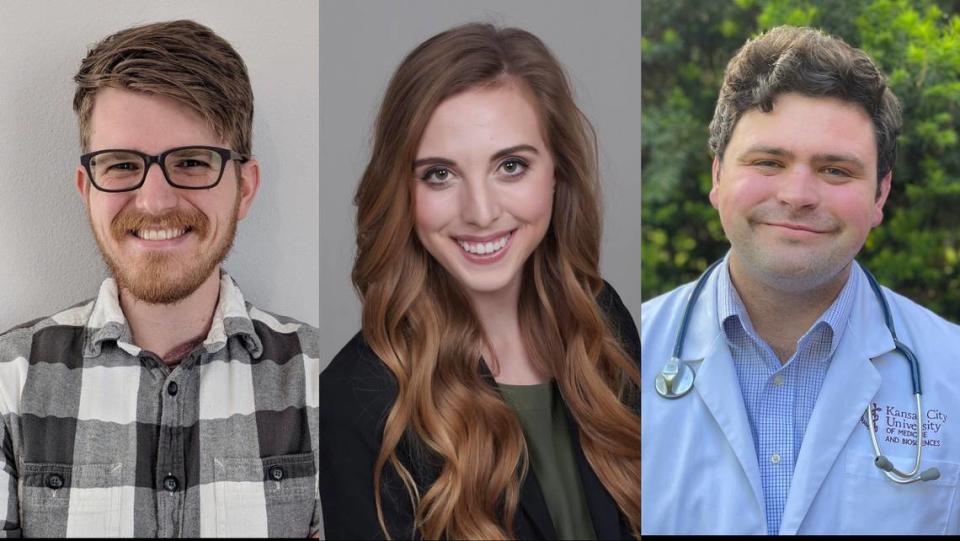
The ER doc’s son
Another member of the school’s inaugural class, Tanner Riscoe, put himself in the thick of things that night, too. “It’s hard to believe it’s been 10 years,” said Riscoe, who is 26 and will graduate next year.
Ten years ago he was a student at McAuley Catholic High School. He had already seen how violent nature can be.
The year before he and his father, Dr. Jim Riscoe, an emergency medicine physician in town, joined other Joplin residents on a medical mission to Haiti after a magnitude 7.0 earthquake struck the Caribbean country.
Young Riscoe knew what a disaster response looked like.
The night of the tornado, while his father set up a triage unit at the town’s Memorial Hall, he headed to St. John’s Regional Medical Center where his dad worked. The building had taken a direct hit.
“I went places I probably shouldn’t have gone, into the hospital, looking for people,” Riscoe said. “I was up to my knees in water. That was stupid, and I got out of that.”
Back at Memorial Hall he watched scores of wounded walk in. Others were carried in on chairs and on doors used as stretchers. He saw the morgue set up behind the auditorium stage; countless other victims lay trapped under rubble.
It was his idea to call his principal and ask if the high school could be used as a secondary triage site.
He had always been interested in his dad’s field of emergency medicine and that commitment grew stronger as he watched for days what it took to pull Joplin through.
‘Ugliest thing I’d ever seen’
Faculty members at the med school have their own memories of that day.
Ten years ago Dr. Ken Stewart was the medical director of the emergency department at St. John’s and would have been working that day. But his family took him on a weekend getaway for his birthday.
“I was actually coming in from Branson while the tornado was ripping up Joplin,” said Stewart, now an assistant professor of primary care at the medical school.
“I was on my way home to Carthage and the tornado sirens were already going off. And we were already starting to get the winds and the hail from the tornado, and I could see the large black high cloud thunderhead over Joplin as I was driving (interstate) 44 to Carthage.
“It was the ugliest thing I’d ever seen.”
Text messages from friends and colleagues told him St. John’s was nearly destroyed. “Once the tornado sirens went off I looked at my wife and said, ‘Honey, I gotta go in.”
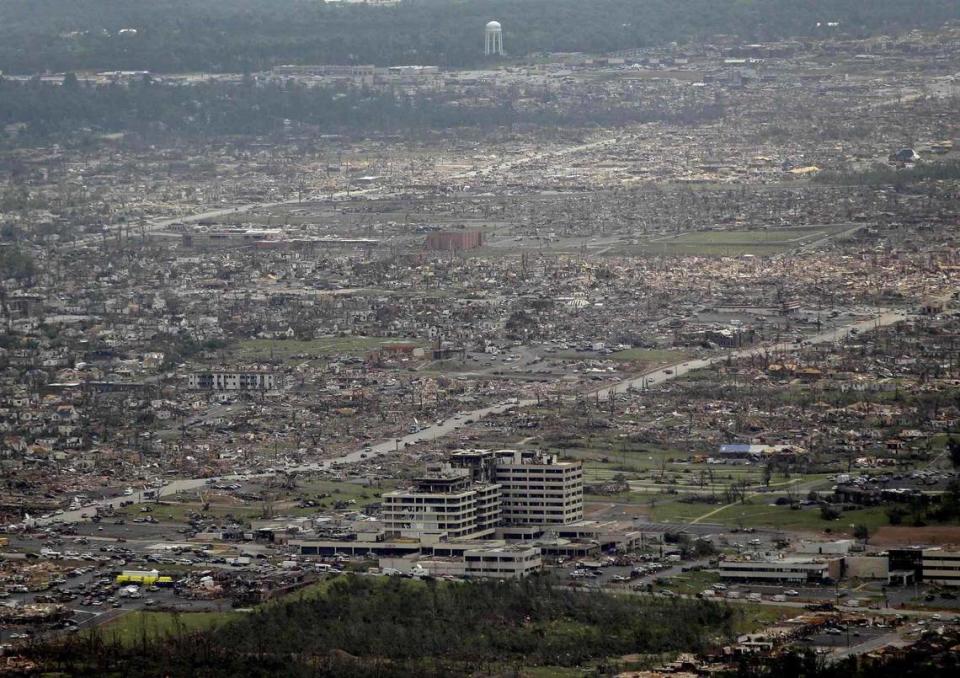
With the highway blocked by windblown semis and cars, Stewart boldly put on his flashers and drove on the shoulder of the road. Through the rain he used backroads to get into town and as he passed through one particular neighborhood the big picture of what had just happened came into full view.
“I just popped out of this into total devastation. It was like a war zone,” said Stewart.
His path to the hospital blocked, he pulled into the parking lot of a Baptist church left standing. People were already bringing the wounded there.
“I was just thinking to myself what am I going to do here? I’ve got the skill set to take care of people but I don’t have any equipment, or supplies or anything,” he said.
Then he heard a voice.
“Hey Dr. Stewart!”
It was a neighbor from Carthage who happened to be the youth minister at the church. Stewart was shocked to see him, but asked to get inside the building to set up a triage area.
“And then off-the-cuff I said ‘and if you could land a helicopter in the parking lot that would be great,’” Stewart said.
More wounded came, for hours. The worst among them was an unconscious woman with a piece of 2x4 lumber lodged in her pelvis.
Helpers arrived.
A paramedic crew helped him start IVs on the woman and stabilize her. A critical care nurse from Kansas City showed up. People in trucks drove the injured to area hospitals.
And the helicopter he had joked about? A helicopter crew somehow, inexplicably, showed up and whisked the impaled woman away.
Many people talk about how calm people were that day, even the badly injured, even the woman with the exposed ankle bone who broke it trying to escape the tornado, said Stewart. Her husband perished.
“It wasn’t uncontrolled panic, or a lot of screaming and crying,” said Stewart. “I know a lot of it was shock, but it was just kind of this acceptance.”
Joplin builds a medical school
The idea of building a medical school here goes as far back as 2008. It was the brainstorm of Dr. Larry McIntire, an ear, nose and throat doctor affiliated with Freeman Health System who led a group of community leaders that raised more than its goal of $30 million. Freeman donated $4 million to the project.
He had long thought that Joplin, “in a nice setting, in a small rural city with great hospital staffs and facilities,” would make a great location for a medical school. He just needed to convince the town. Turns out it wasn’t a hard sell.
“I can tell you Joplin loves our medical students,” said Stewart.
The med school students feel it when they wear their KCU T-shirts around town and people greet them.
The members of the Joplin Regional Medical School Alliance that raised the money came from many arenas. Bankers, local business owners, financial advisers, accountants, hospital administrators, dentists, doctors and representatives from Missouri Southern State University in town.
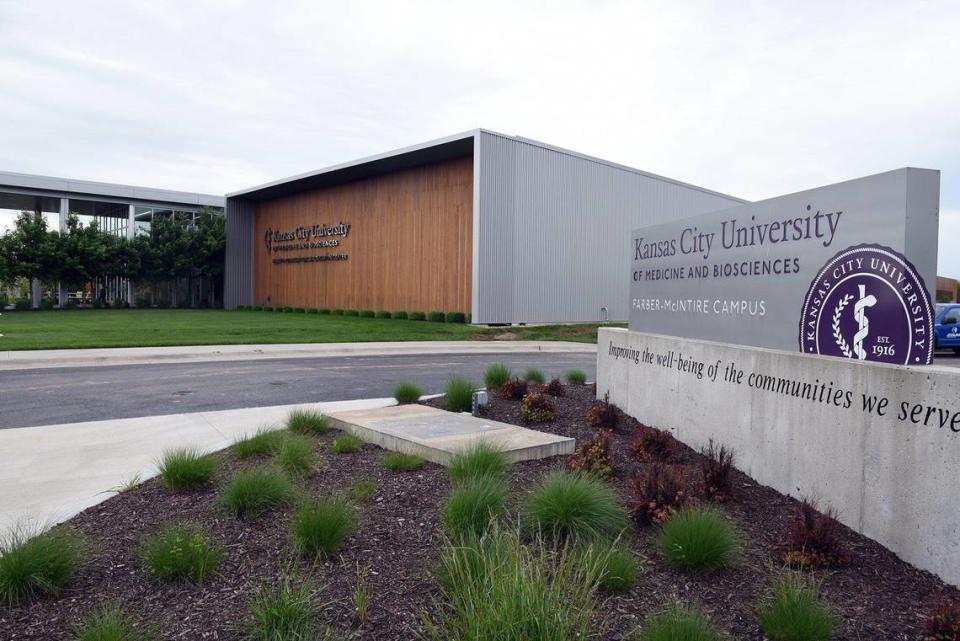
“To a person I never had anyone back up from me and say they didn’t think this should happen,” McIntire said. “It drew their interest because they could envision the fact that it was possible.”
The gift of the temporary hospital building and land from Mercy hospital was a game-changer. When the campus opened it was the first new medical school in Missouri in nearly 50 years.
“Had we not had that tornado we would not have that facility, so who knows?” said McIntire.
Nearly 40% of KCU graduates practice medicine in rural areas, according to the school, which has its main campus on Independence Avenue in Kansas City.
Having a second campus in Joplin is a chance to further address a rural America affliction. Rural residents have less access to physicians than their urban neighbors.
Nationally, the patient-to-primary-care-doctor ratio in rural areas is 39.8 doctors per 100,000 residents, compared to 53.3 per 100,000 folks who live in urban America, says the National Rural Health Association.
Joplin draws patients from miles away, including Arkansas, Oklahoma and Kansas, Stewart said, and many of those areas lack primary care physicians

Dentists, too, are harder to come by in rural areas than cities, and KCU will drill down on that problem next.
On May 22, the 10th anniversary of the tornado, KCU will break ground on a new College of Dental Medicine in Joplin scheduled to open in 2023.
The dental school is funded by several supporters from Kansas City, including the Patterson Family Foundation, which donated $9 million to the project, and the Sunderland Foundation, which donated $6 million.
The medical school and dental school will be connected by a glass walkway, said McIntire.
It is not lost on him that if the campus had been there 10 years ago it would have taken a direct hit.
“I think the importance of having doctors trained here is that people have the opportunity to come be exposed to what rural medicine can offer and what living in a town like Joplin and being a physician in a town like Joplin can offer,” said Freed, who plans to be an OB/GYN.
“For a physician who is wanting to start a family or who’s looking to practice in a more rural area, I think having this school here and having students grow here and learn here and find community here makes them a lot more inclined to either stay or to come back after residency and practice.
“And I think that’s huge because ... we need that kind of quality health care and we need more of it.”
A special Mother’s Day
The invitation-only graduation ceremony on Sunday afternoon will take place where Cali Clark graduated from high school the day of the tornado, the Leggett & Platt Athletic Center at Missouri Southern.
Like some of her other med school colleagues, Clark planned to be a doctor — her father is an anesthesiologist — and wants to work in the area but figured she’d have to move away for med school. She looked at schools in Kansas City and St. Louis. But when KCU-Joplin was announced, it became No. 1 on her list.
“When you view it in the light of honoring those who lost their lives and who lost everything, bringing health care to the region … that’s what really matters,” said Clark. “What can we do to show that we are working towards something better?”
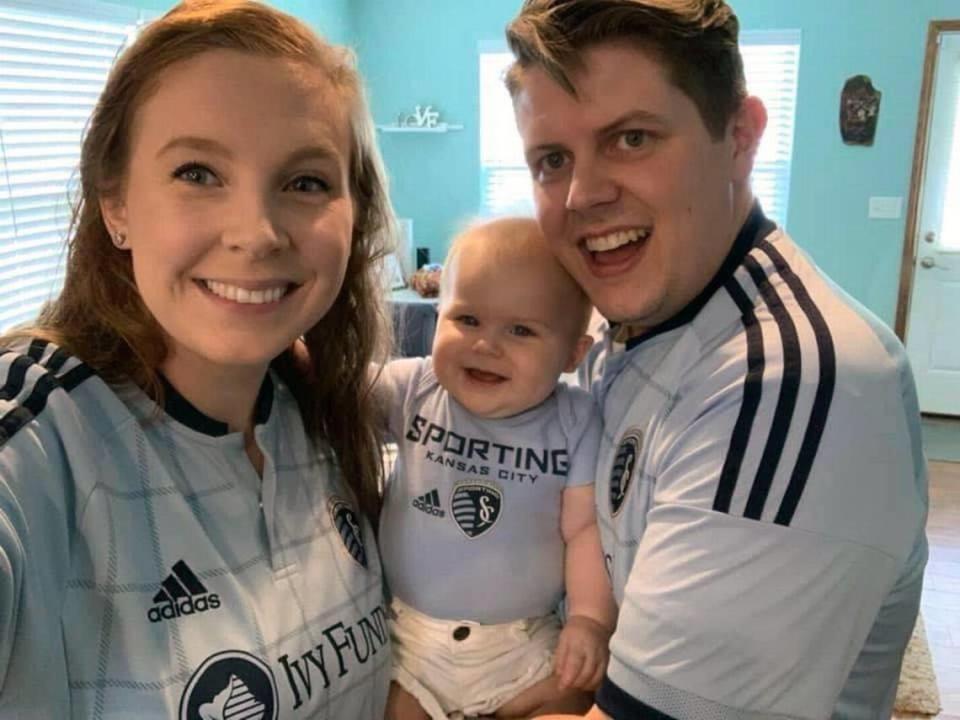
After graduation Clark will start her residency at Freeman hospital, where both her parents work. “It’s like I’m joining the family business,” she said.
Sunday will also be her first Mother’s Day. She had a baby eight months ago.
“There will be a lot of mothers coming to Joplin for the med school” graduation, said McIntire, whose granddaughter will graduate on Sunday, too. “What a scenario that is. Everybody will be in town for that one.”
The forecast for Sunday?
A chance of rain.
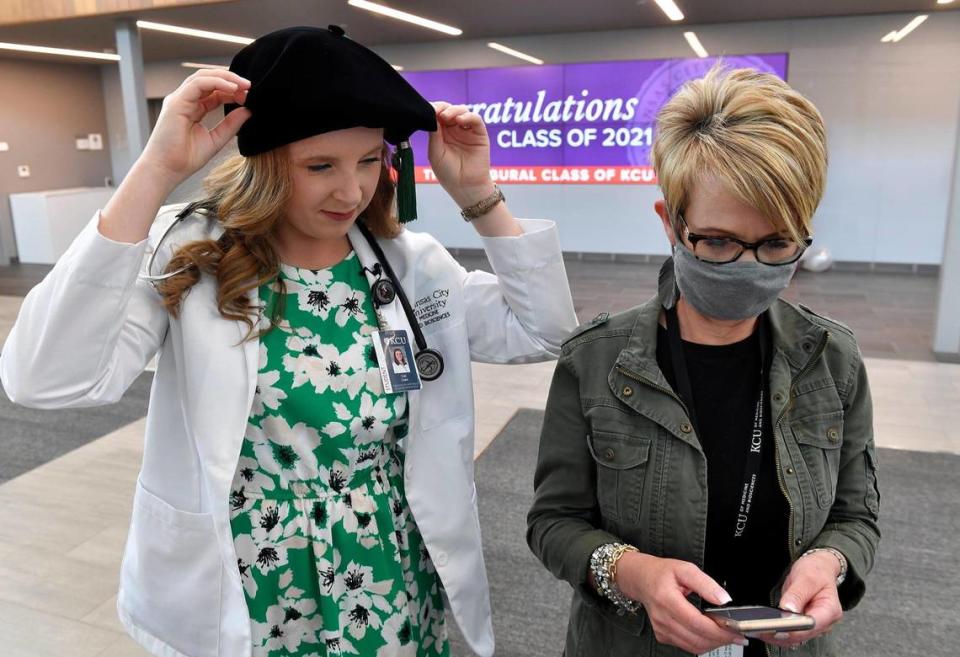

 Yahoo Movies
Yahoo Movies 